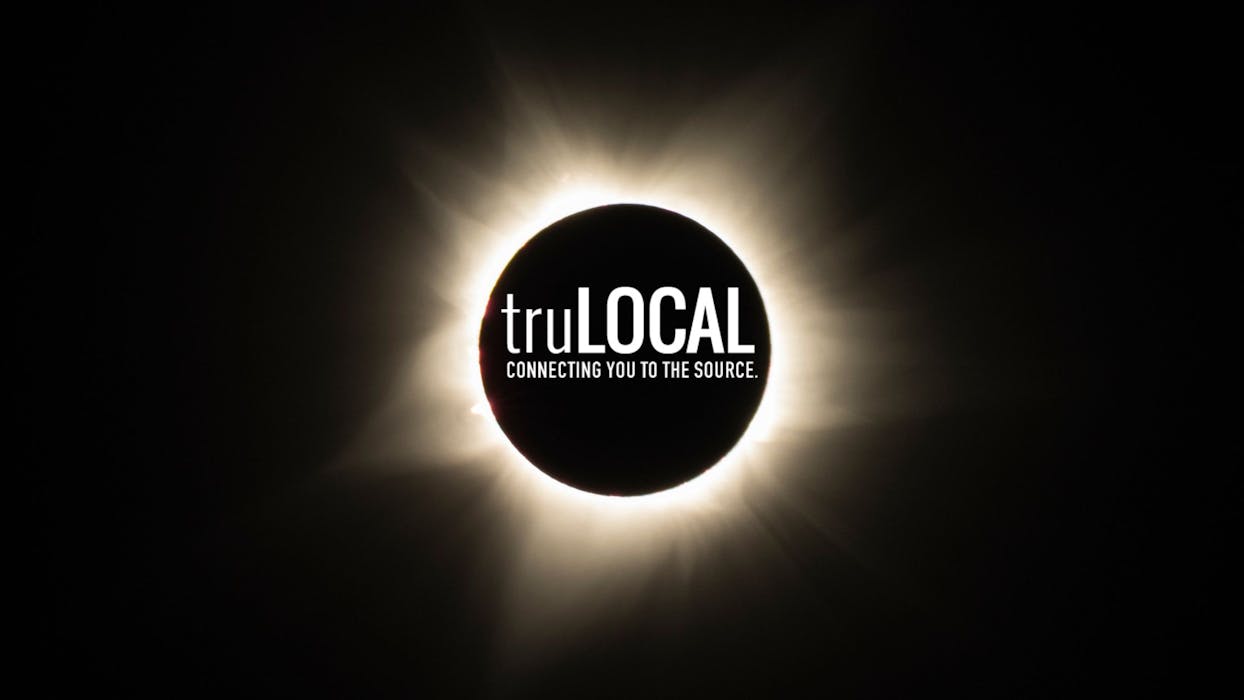Safely Look at the Solar Eclipse
Save your truLOCAL box to make a Solar Eclipse Projector (and save your eyes too).
 Back
Back






Save your truLOCAL box to make a Solar Eclipse Projector (and save your eyes too).

If you’ll be in the right spot on April 8th, you’ll be treated to a dazzling light show known as a solar eclipse. But wait, aren’t those seriously dangerous to look directly at? Yep, totally dangerous … if you are not prepared. Directly staring at the sun, even during an eclipse, can cause irreversible damage to your eyes but we can help you see it in real-time and not fry out your peepers. For anyone wanting to experience the eclipse safely, making a solar eclipse projector using a truLOCAL box is a unique and safe way to observe this rare event.
Before we get into the how-tos of making a truLOCAL branded projector, let’s take a moment to appreciate the magnificence of a solar eclipse. A solar eclipse occurs when the moon passes between the Earth and the sun, casting its shadow on our planet, and turning day into an eerie twilight. We’ve heard it is a really cool experience that’s been fascinating (and likely freaking out) humanity for millennia and if you are in southern Ontario, southern Quebec, mid New Brunswick, Northern PEI, or the middle of Newfoundland/Labrador, you are in the prime location to witness the eclipse at its best.
While witnessing a solar eclipse is something not to be missed, it’s our strong warning that you need to prioritize safety. Again, directly staring at the sun, even during an eclipse, can cause irreversible damage to your eyes. Sure, you could whip out your phone and take a video to watch later but we are taking this one step further with some quick craft time. More sophisticated methods of using special solar viewing glasses or telescopes with solar filters are great options for keeping you safe but those sound expensive and, well, not crafty at all. Making your own solar eclipse projector is fun, cheap, and provides a safe and accessible means of experiencing the eclipse.
Basically, you are going to make a pinhole camera except that you will be watching the projection in real time rather than exposing a photograph. You’re likely forgetting your grade 4 science project of making a pin-hole camera (we sure are) so here are the full instructions:
Materials Needed:
Step 1: Prepare the Box
Remove all contents of your truLOCAL box (remember that the box, insulating paper, and plastic bag for the ice are both recyclable - Earth day is right around the corner!). Open the box and, using tape, cover one of the inner sides with white paper or card stock. This will be the viewing screen where the solar eclipse will be projected.
Step 2: Cut the Holes
On the opposite side of the white paper, cut two holes side by side and at least 10 cm apart (one for the sun, the other to look through). The holes should be larger than 3cm in size but the shape of the holes is not crucial.
Step 3: Construct the Pinhole
Cover one of the holes with aluminum foil and tape it in place. It doesn’t matter if the shiny side is facing out or not. We suggest using foil because it is thin and will keep the pinhole’s small shape. If you have kids, though, maybe put a layer of tape on the foil where you plan to poke the hole just for durability. Grab your pin and poke a tiny hole in the aluminum foil. For best results, make the pinhole as small and precise as possible.
Step 4: Seal up your box
Fold in each of the box flaps together and seal it up with with tape. Ideally, there won’t be any light coming in through the top where you've sealed it.
Step 5: Test Your Projector
With your projector assembled, it’s time to test it. Go outside, turn your back to the sun, and look through the eye hole and try to position the box so that you see a projection of the sun on the white paper. You may have to change the angle of the box to get it all lined up but practice will save you some fiddlin' in the dark come eclipse mode. When testing your projector using the plain ol' boring regular sun, it will just look like a big ball of light (which is exactly what the sun is) on the paper but when the moon starts going over the sun, you will see its shadow slowly covering the sun.
Step 6: Observing the Solar Eclipse
On the day of the solar eclipse, position your projector in a location with ample sunlight and a clear view of the sky like a treeless field or park. As the eclipse unfolds, the image of the sun will be projected onto the viewing screen inside the box, allowing you to safely observe the event without staring directly at the sun.
Crafting a solar eclipse projector using a truLOCAL box is not only a fun and educational DIY project but also a safe and accessible way to experience the beauty of a solar eclipse. By using a pinhole projection, you can witness this eclipse with clarity and ease, all while protecting your eyes from harm. So gather your materials, make your projector, and get ready to witness an event that I have heard can bring people to tears (although maybe those people were staring directly at the eclipse).
Article by: Steven Tippin
Posted on April 2nd, 2024